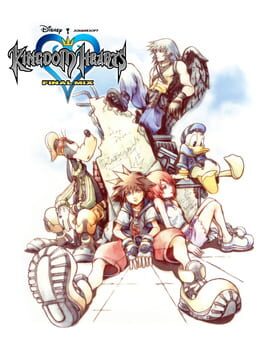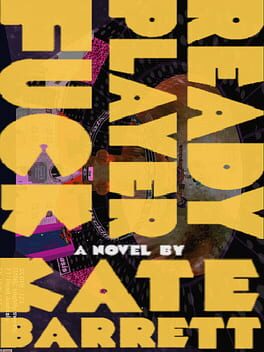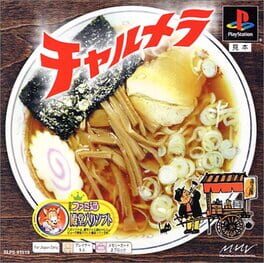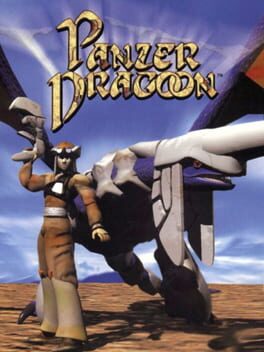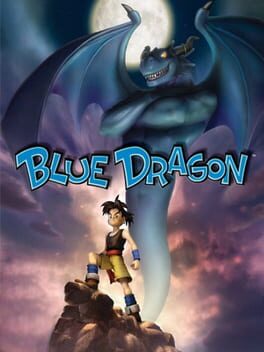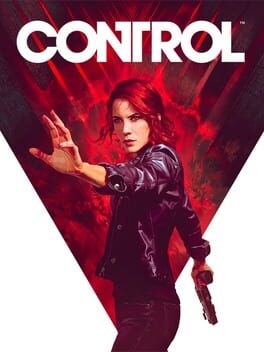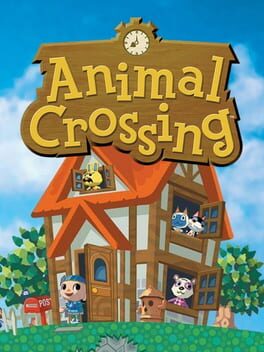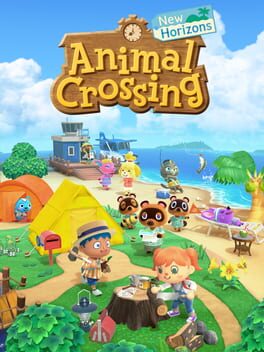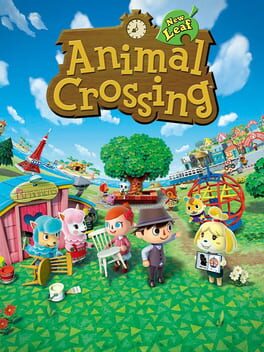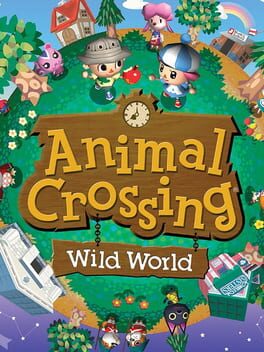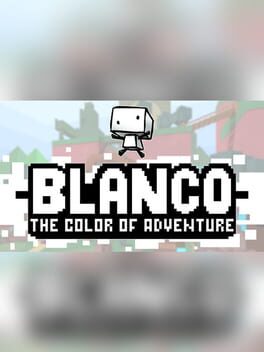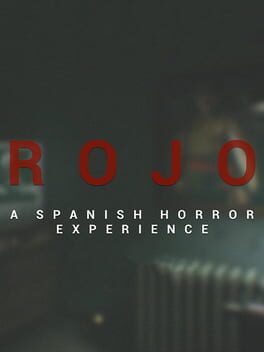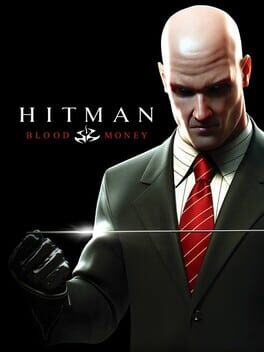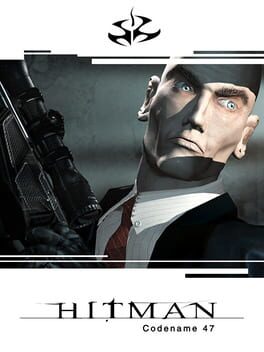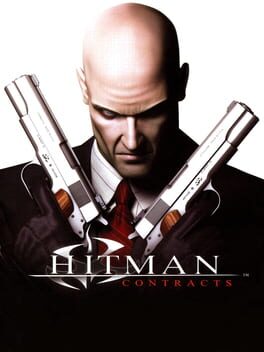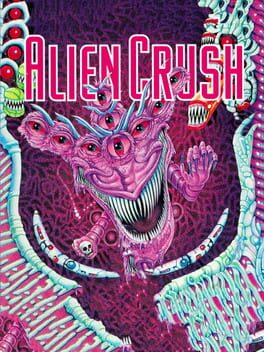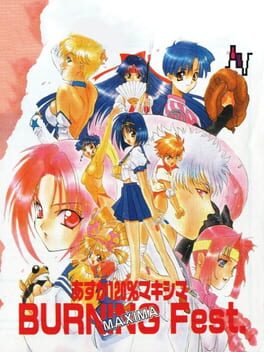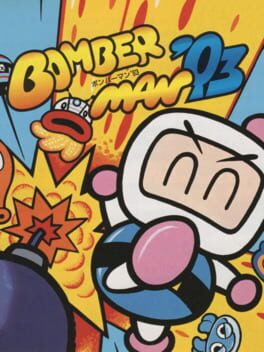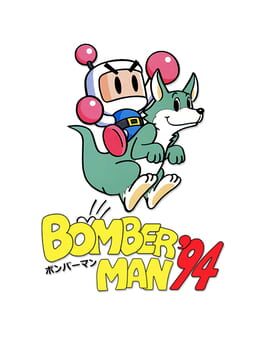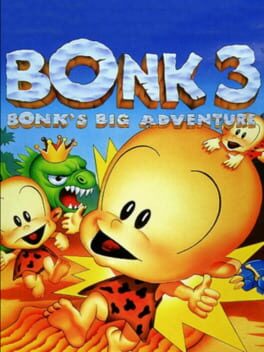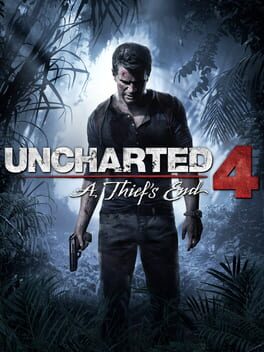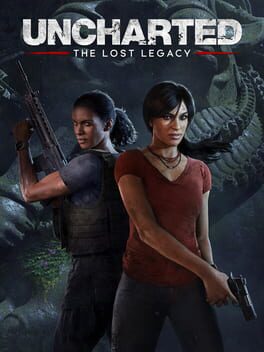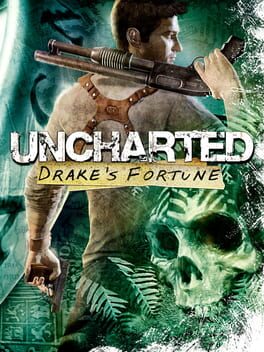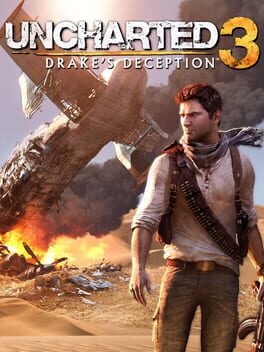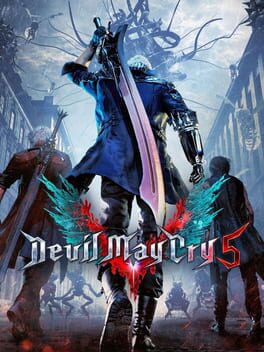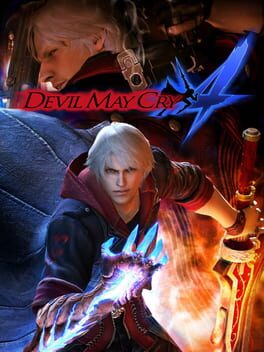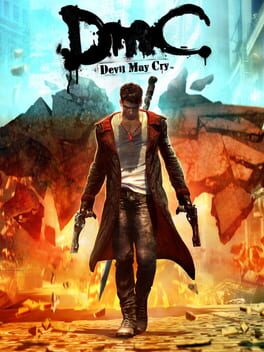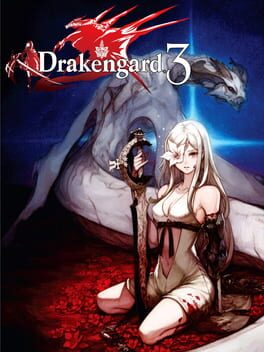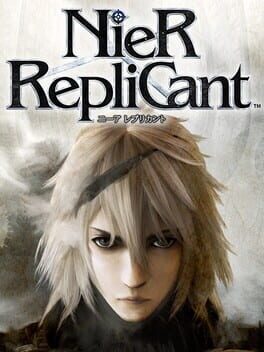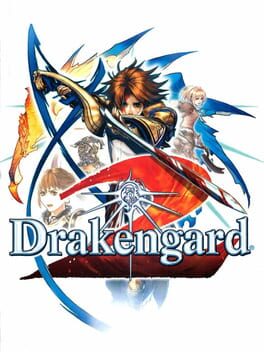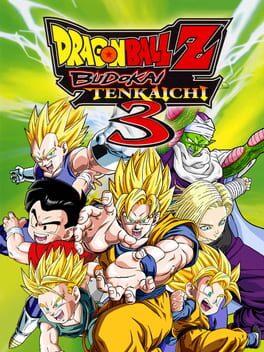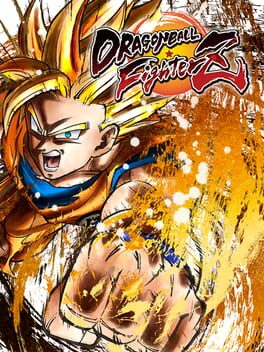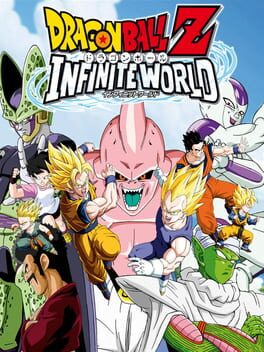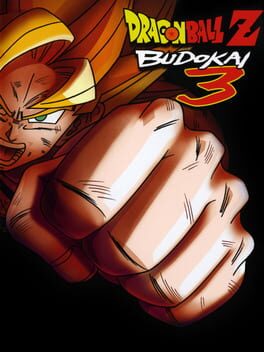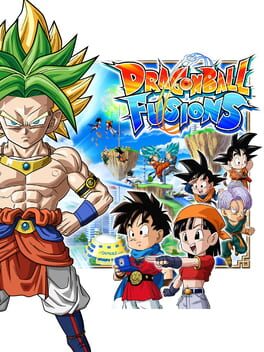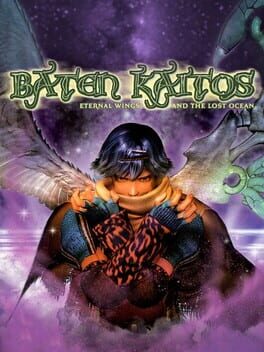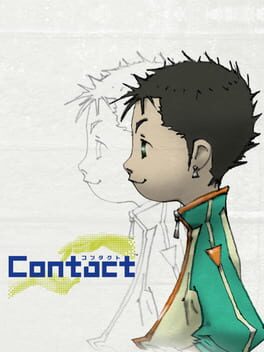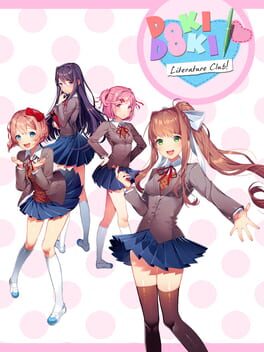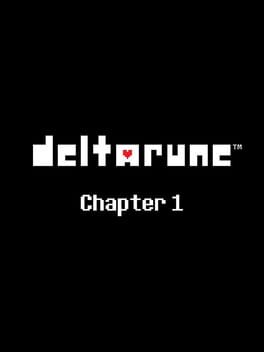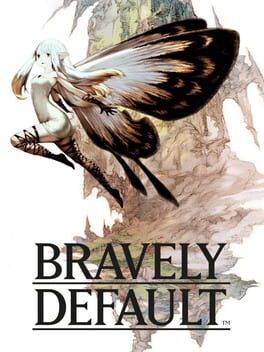2412 reviews liked by Ardwyw_mp3
minor spoilers from early game
it’s common to read people saying that Kingdom Hearts changed their lives; how the game is chained to their tough, good or formative moments. Sora, a fictional character, being like a friend to them in childhood and growing up with him as time passes for both. almost everyone who likes KH has something to say about it. and because of this, i write and rewrite this a few times. among all those special stories from many people, i felt like i had anything meaningful to add. why should i write something that’s so well-known within the canon of Kingdom Hearts players?
i questioned myself about having some kinda special thing to say and not just being one among the others. since yeah, i owe KH one. and when i noticed that thought of mine, i realized that for a brief moment, i lost the point of the game. Kingdom Hearts is not about surpassing other people in such an egocentric way.
Kingdom Hearts invites us to grow up with Sora. it’s a journey about growing up. Sora is the kind of person who cares more about other people than himself, and allied with that, the Disney Worlds aren’t fillers at all; instead, they’re the perfect opportunity to develop the core characters. the Wonderland World is the key moment that demonstrates not just to Donald and Goofy, but also to us, the link between the narrative themes to its progression design.
we cross through space with an awkward ship that seems to be over-complicated and more of a hindrance than anything else. yeah, this idea is half right, but i prefer to look at it from another perspective that contributes more to the game’s substance. the Gummi Ship sections are like a game within the game, a childhood game. in Destiny Islands, the game establishes a strong desire of Sora, Riku, and Kairi to adventure and discover new worlds. the manner in which they have to reach the skies is by using the Highwind, a raft, for which we have to collect items to craft it. it wouldn’t make sense for the Gummi Ship sequences not to exist, because it, which is also named Highwind, was born from their desire to travel to other worlds, it’s the same thing in essence as the raft. Kingdom hearts’ core progression is fundamentally the materialization of a kid’s creativity.
it wouldn’t be the same if we didn’t have a fully moddable cool spaceship that traverses wormholes and destroys meteors with big guns and lasers before we land in the worlds.
the principle of the game’s core is fragmentarily divided; traveling through space with the Gummi Ship or giving up their time to help people in other worlds, but there’s a particular segment that unifies both elements in a good – yes, good – way: the Deep Jungle World. while in space, before they land, once again Donald’s ideals conflict with Sora’s ones. find King Mickey or find Riku and Kairi? as a consequence of the verbal fight, the Gummi Ship accidentally falls into a maze-like jungle.
people hate this level because it’s obtuse and stressful, but that’s exactly the point of this place. they didn’t want to be there in that unfortunate situation, temporarily divided in such a hostile place. a parallel can be drawn between what happened to Sora and Riku in Destiny Islands. the game uses Deep Jungle World segment for Donald and Sora to recognize that being egocentric about their feelings and objectives would put them in different places, both physically and emotionally. Sora is far from home, getting lost is fair not just because it’s a jungle, but also a crucial part for the characters to recognize the way they acted, mature and bond their hearts.
the long-awaited dream adventure was illusory; abstract – because that’s how life works. it will not wait for us to prepare ourselves for what we think will happen. we will not have the needed time to mature, rather we’ll have to shield our souls, slash the regrets and cast the light that will guide us through the dark path. regardless of the unknown path, don’t let the future scare you at all; there are people who will need you, and you’ll have to be the Sora of their lives.
Destiny Islands is where it all begins, ends, and where all promises are made. here, a new chapter of their lives closes so that a new page can be written. Sora is walking toward an unknown, uncertain, and harder path; he will face the faceless, but this time there’s someone waiting for him to fulfill his promise, and he grew up as a person during the journey. no matter how hard things will be from now on, he is no longer the same. i’m not the same as when i started writing this. i’m fine not writing with all the affection i owe to this game; i can take the opportunity to replay the game and write down more of the things i’ve been keeping with me. i’m fine with being one, among all those special stories.
it’s common to read people saying that Kingdom Hearts changed their lives; how the game is chained to their tough, good or formative moments. Sora, a fictional character, being like a friend to them in childhood and growing up with him as time passes for both. almost everyone who likes KH has something to say about it. and because of this, i write and rewrite this a few times. among all those special stories from many people, i felt like i had anything meaningful to add. why should i write something that’s so well-known within the canon of Kingdom Hearts players?
i questioned myself about having some kinda special thing to say and not just being one among the others. since yeah, i owe KH one. and when i noticed that thought of mine, i realized that for a brief moment, i lost the point of the game. Kingdom Hearts is not about surpassing other people in such an egocentric way.
Kingdom Hearts invites us to grow up with Sora. it’s a journey about growing up. Sora is the kind of person who cares more about other people than himself, and allied with that, the Disney Worlds aren’t fillers at all; instead, they’re the perfect opportunity to develop the core characters. the Wonderland World is the key moment that demonstrates not just to Donald and Goofy, but also to us, the link between the narrative themes to its progression design.
we cross through space with an awkward ship that seems to be over-complicated and more of a hindrance than anything else. yeah, this idea is half right, but i prefer to look at it from another perspective that contributes more to the game’s substance. the Gummi Ship sections are like a game within the game, a childhood game. in Destiny Islands, the game establishes a strong desire of Sora, Riku, and Kairi to adventure and discover new worlds. the manner in which they have to reach the skies is by using the Highwind, a raft, for which we have to collect items to craft it. it wouldn’t make sense for the Gummi Ship sequences not to exist, because it, which is also named Highwind, was born from their desire to travel to other worlds, it’s the same thing in essence as the raft. Kingdom hearts’ core progression is fundamentally the materialization of a kid’s creativity.
it wouldn’t be the same if we didn’t have a fully moddable cool spaceship that traverses wormholes and destroys meteors with big guns and lasers before we land in the worlds.
the principle of the game’s core is fragmentarily divided; traveling through space with the Gummi Ship or giving up their time to help people in other worlds, but there’s a particular segment that unifies both elements in a good – yes, good – way: the Deep Jungle World. while in space, before they land, once again Donald’s ideals conflict with Sora’s ones. find King Mickey or find Riku and Kairi? as a consequence of the verbal fight, the Gummi Ship accidentally falls into a maze-like jungle.
people hate this level because it’s obtuse and stressful, but that’s exactly the point of this place. they didn’t want to be there in that unfortunate situation, temporarily divided in such a hostile place. a parallel can be drawn between what happened to Sora and Riku in Destiny Islands. the game uses Deep Jungle World segment for Donald and Sora to recognize that being egocentric about their feelings and objectives would put them in different places, both physically and emotionally. Sora is far from home, getting lost is fair not just because it’s a jungle, but also a crucial part for the characters to recognize the way they acted, mature and bond their hearts.
the long-awaited dream adventure was illusory; abstract – because that’s how life works. it will not wait for us to prepare ourselves for what we think will happen. we will not have the needed time to mature, rather we’ll have to shield our souls, slash the regrets and cast the light that will guide us through the dark path. regardless of the unknown path, don’t let the future scare you at all; there are people who will need you, and you’ll have to be the Sora of their lives.
Destiny Islands is where it all begins, ends, and where all promises are made. here, a new chapter of their lives closes so that a new page can be written. Sora is walking toward an unknown, uncertain, and harder path; he will face the faceless, but this time there’s someone waiting for him to fulfill his promise, and he grew up as a person during the journey. no matter how hard things will be from now on, he is no longer the same. i’m not the same as when i started writing this. i’m fine not writing with all the affection i owe to this game; i can take the opportunity to replay the game and write down more of the things i’ve been keeping with me. i’m fine with being one, among all those special stories.
Ready Player Fuck
2017
A Cultura nerd precisa ser revisada.
É uma cultura que sequestra obras de arte em um culto egocentrico e excludente. Pessoas resgatam símbolos das obras para se identificarem e vão enaltecer aqeuelus que reconhecem esses símbolos, que conseguem ler as referências e se sentem superiores por conta disso, mais popularmente culturados.
Ready Player Fuck sequestra esses símbolos em uma sátira divertida, engraçada e que não se importa com propriedade intelectual. Usando esses símbolos para mostrar o quão tosco e sem noção é esse imaginário coletivo do nerd boomer, que adora essas imagens religiosamente.
É uma cultura que sequestra obras de arte em um culto egocentrico e excludente. Pessoas resgatam símbolos das obras para se identificarem e vão enaltecer aqeuelus que reconhecem esses símbolos, que conseguem ler as referências e se sentem superiores por conta disso, mais popularmente culturados.
Ready Player Fuck sequestra esses símbolos em uma sátira divertida, engraçada e que não se importa com propriedade intelectual. Usando esses símbolos para mostrar o quão tosco e sem noção é esse imaginário coletivo do nerd boomer, que adora essas imagens religiosamente.
Charumera
1999
Vendor-man Patsu just opened up his Ramen shop. He runs into Kamikaze Jin, fellow lover of ramen and buys his first bowl. He hates your shit ramen and tells you to step up your game or get the fuck out of town. Travel the cozy town playing your charumera to attract new customers. These lab-rats are here to taste your nuclear ramen so pay attention to their complains and tweak your recipes accordingly. At the end of each day you'll be able to edit your dishes before heading out on a new day. That's the general loop, it's pretty fun experimenting with recipes, but I'm just throwin' shit at the wall to see what works, because I can't cook. I hope the entire town doesn't end up with food poisoning.
Panzer Dragoon
1995
The first few minutes of Panzer Dragoon when your blue dragon majestically soars above the rippling water to the tune of Flight define a classic video game introduction that I doubt I will ever forget. A part of me expected the experience to be steadily downhill from there given the common complaints that I’ve heard, but to the game’s credit, it quickly established its defining hook and never let go. Panzer Dragoon was one of the first games to take total advantage of its 3D space, and it does so through its ability to rotate the player’s aim in 360 degrees. The catch is that while you can’t aim sideways/behind the dragon when looking forward, there’s a trade-off in that you can’t steer the dragon and change its mid-air position while in first-person aiming around the sides of/behind its body. As a result, there’s a precise science to swapping between these two camera modes. The macro never gets complex (shoot everything in sight while dodging and shooting down enemy attacks), but the micro is just involved enough to where there’s little downtime as you constantly peruse your surroundings and systematically pick off your foes. This is a game that wants the player to be aware of everything around them, and Team Andromeda was more than happy to let them soak in the sights given that the minimalist UI (simply consisting of a radar for spotting enemies and a player health bar) never really gets in the way. Even today, I find Panzer Dragoon to be an absolutely gorgeous game, and I can only imagine how people in 1995 felt playing this for the first time.
I’ve been warned that Panzer Dragoon’s difficulty can be a significant roadblock, but after a few playthroughs, I think it’s definitely conquerable. Besides mastering control of the player reticle/camera, players need to recognize when to utilize the homing laser lock-on (holding down the fire button) versus mashing to quickly fire the player’s handgun. The homing laser is great for getting rid of enemy swarms and easily targeting moving foes, while the handgun is a godsend for melting beefy mobs and bosses while sniping faraway targets that can’t be locked onto. In particular, Episode 3’s jumping ship boss is a notable chump check if you refuse to lock-on, while Episode 5’s airships will overwhelm you if you don’t mash. Additionally, I’ve also heard that Panzer Dragoon can feel very unforgiving since the player is allowed only one game-over before they have to restart a run, and the game only regenerates half of the player's health upon completing a level. However, given that the player can earn an extra credit per stage if they manage to shoot down more than 85% of the enemies in a single episode, I'd say there’s enough leeway given if the player takes the time to master its controls and meticulously defeat enough enemies instead of simply playing entirely defensive.
The only real gripe that I’d have is that enemy attacks sometimes blend into the background (ex: black cannonballs on top of dark environments) and can be tough to spot, especially when obscured by smoke effects from already defeated airships. I can still dodge most of these attacks with enough experience, having learning the enemy spawn positions, though it takes time to master given that players need to adapt to the game’s weightiness and natural response time. After all, you’re controlling a rider controlling a dragon rather than controlling the dragon itself, so it takes a bit more time to shift the model away from incoming barrages. As is, I’d still prefer if all enemy attacks were distinctly colored to stand out from both my own projectiles and the surroundings. Regardless, Panzer Dragoon was a breath of fresh air and I don’t mind its relative simplicity or brevity when it manages to succinctly capture an enthralling rail-shooting experience that I’ll gladly replay just to see myself visibly improve with every new run. All I can say is that this was certainly no flight of fancy; if the base model was this good, then I can’t wait to see what Team Andromeda/Smilebit have to offer with Zwei and Orta.
I’ve been warned that Panzer Dragoon’s difficulty can be a significant roadblock, but after a few playthroughs, I think it’s definitely conquerable. Besides mastering control of the player reticle/camera, players need to recognize when to utilize the homing laser lock-on (holding down the fire button) versus mashing to quickly fire the player’s handgun. The homing laser is great for getting rid of enemy swarms and easily targeting moving foes, while the handgun is a godsend for melting beefy mobs and bosses while sniping faraway targets that can’t be locked onto. In particular, Episode 3’s jumping ship boss is a notable chump check if you refuse to lock-on, while Episode 5’s airships will overwhelm you if you don’t mash. Additionally, I’ve also heard that Panzer Dragoon can feel very unforgiving since the player is allowed only one game-over before they have to restart a run, and the game only regenerates half of the player's health upon completing a level. However, given that the player can earn an extra credit per stage if they manage to shoot down more than 85% of the enemies in a single episode, I'd say there’s enough leeway given if the player takes the time to master its controls and meticulously defeat enough enemies instead of simply playing entirely defensive.
The only real gripe that I’d have is that enemy attacks sometimes blend into the background (ex: black cannonballs on top of dark environments) and can be tough to spot, especially when obscured by smoke effects from already defeated airships. I can still dodge most of these attacks with enough experience, having learning the enemy spawn positions, though it takes time to master given that players need to adapt to the game’s weightiness and natural response time. After all, you’re controlling a rider controlling a dragon rather than controlling the dragon itself, so it takes a bit more time to shift the model away from incoming barrages. As is, I’d still prefer if all enemy attacks were distinctly colored to stand out from both my own projectiles and the surroundings. Regardless, Panzer Dragoon was a breath of fresh air and I don’t mind its relative simplicity or brevity when it manages to succinctly capture an enthralling rail-shooting experience that I’ll gladly replay just to see myself visibly improve with every new run. All I can say is that this was certainly no flight of fancy; if the base model was this good, then I can’t wait to see what Team Andromeda/Smilebit have to offer with Zwei and Orta.
Dragon's Dogma II
2024
there's something unimaginably beautiful about games that feel just like when i'm really tired with a drawing and i just decide to do whatever and put it out into the world, then i see so many wrong things with it that could have been fixed with time but then again i'm very tired so in no way i'm touching it again. makes me think how human work will forever be valuable, we're able to develop apathy for imperfections due to fatigue and that's honestly beautiful.
excluding the obvious deadline constraints the team had to put up with, this kind of ambitious, large scale, unpredictable, weird, aggravating, difficult, time consuming, tiring, agressive, livable world barely has any space in the sanitized UX focused world but yet here we are, yet after all the misinformation efforts by 20 year-certified dumbass Stephanie Sterling here we are experiencing what is probably one of the most feverish mainstream gaming efforts done by a big studio in the last decade. this is probably the most important game Capcom has released in a lot of years and i'm all here for it, because if you play the game you end up realizing the boxart is extremely funny and there are simply no other games that do this kind of thing anymore. like, my bf missed seeing a major scene with a character around the last part of the game because he never got any of the optional quests involving him how is this not pure art.
also gotta love the genre of games that you could easily swap a "thank you for playing" at the end with "fuck you for playing!!" and it would still make perfect sense. they're dear in my heart and i will protect them always
excluding the obvious deadline constraints the team had to put up with, this kind of ambitious, large scale, unpredictable, weird, aggravating, difficult, time consuming, tiring, agressive, livable world barely has any space in the sanitized UX focused world but yet here we are, yet after all the misinformation efforts by 20 year-certified dumbass Stephanie Sterling here we are experiencing what is probably one of the most feverish mainstream gaming efforts done by a big studio in the last decade. this is probably the most important game Capcom has released in a lot of years and i'm all here for it, because if you play the game you end up realizing the boxart is extremely funny and there are simply no other games that do this kind of thing anymore. like, my bf missed seeing a major scene with a character around the last part of the game because he never got any of the optional quests involving him how is this not pure art.
also gotta love the genre of games that you could easily swap a "thank you for playing" at the end with "fuck you for playing!!" and it would still make perfect sense. they're dear in my heart and i will protect them always
Dragon's Dogma II
2024
as vezes a gente nem percebe que as raízes são fortes... dragon's dogma, em 2012, junto com dark souls deve ter afetado a maneira que meu cérebro funciona ao jogar video game de formas irreparáveis. eu não estava armado nessa época, eu não tinha vocabulário, eu não sabia o que pensar durante o jogo além de "diversão" e as percepções básicas. dark souls me acompanhou a vida toda depois disso - a primeira vez que eu escrevi foi justamente dele! mas dragon's dogma ficou lá no cantinho escondido -não joguei dark arisen!- passei 200 horas nele e sendo sincero nunca pensei a fundo no porquê.
e agora depois de uma jornada de 68 horas e 139 dias (in-game) eu entendo tudo, é óbvio que DD foi feito pra mim, todas as Decisões que eu sou obcecado são feitas com a maior confiança do mundo, eu amo jogo de andar por aí, de se planejar e sair numa caminhada que só deus sabe o que vai acontecer, eu amo gerenciamento de recursos como o poder de teleportar, eu amo limites de tempo e quando achei que não iria criar um vínculo com a história "principal" (não conte para o pessoal da página do jogo que a verdadeira história principal são momentos que acontecem enquanto você está caminhando) ela também é uma história que brinca com meus temas favoritos. agora vou descansar por uns meses, deixar marinar e jogar o dark arisen sabendo que dessa vez estou armado com as palavras certas pra dar o carinho que ele merece.
e agora depois de uma jornada de 68 horas e 139 dias (in-game) eu entendo tudo, é óbvio que DD foi feito pra mim, todas as Decisões que eu sou obcecado são feitas com a maior confiança do mundo, eu amo jogo de andar por aí, de se planejar e sair numa caminhada que só deus sabe o que vai acontecer, eu amo gerenciamento de recursos como o poder de teleportar, eu amo limites de tempo e quando achei que não iria criar um vínculo com a história "principal" (não conte para o pessoal da página do jogo que a verdadeira história principal são momentos que acontecem enquanto você está caminhando) ela também é uma história que brinca com meus temas favoritos. agora vou descansar por uns meses, deixar marinar e jogar o dark arisen sabendo que dessa vez estou armado com as palavras certas pra dar o carinho que ele merece.
Blue Dragon
2006
text by tim rogers
★★★☆
“A BOTTOMLESS BOWL OF CAP'N CRUNCH ON A FIFTY-HOUR SATURDAY MORNING.”
Quite accidentally — that’s how obsessive-compulsize behavior gets started. Case in point: I was eight years old when I first played Dragon Quest, and the game boggled my overweight mind from so many directions — here I’d spent most of my sentient life making Super Mario run and jump, and here was a game that required me to open a menu and click a command to open a door. I needed to sit and review the instruction manual, which I did upon waking early one Saturday morning. I poured a bowl of Cap’n Crunch and read over the instruction manual at my family’s dinner table.
Ever since then, I can’t play a new RPG without reading the instruction manual over a bowl of cold cereal. They used to be big and fascinating. They used to have cryptic, six-to-twelve-page-long story descriptions and tons of character art; Final Fantasy VI for the Super Famicom easily had the best RPG instruction manual of all-time. Most RPGs these days don’t break much new ground in their instruction manuals; part of me wants to groan at every Square-Enix manual, where they will spell everything out in extended notation: “Use the directional buttons up or down to move the cursor up or down; when the cursor has highlighted the ‘Fight’ command, press the O button to confirm.” Namco’s Tales of manuals, on the other hand, are fresh, clean, and honest, three words you’re seldom to hear used about anything made by Namco: they all start with a big chart, in which the directional buttons’ use is described as “On the field: move character” “In menus: move cursor” and the O button is described as “In menus: confirm” “On the field: speak / investigate”. Square-Enix’s games’ manuals earn their lengths by describing the menu selection confirming process every time they explain the function of a different menu selection. Tales of games earn their length and weight when they drift into extended segments about the unique in-game magic systems.
RPG instruction manuals nowadays are rendered unnecessary by droning, in-game tutorials that make sure no newbie is left behind. The manuals continue to exist, it seems, to satisfy the obsessive, now-archetypal desire that sleeps deep within the RPG-playing hordes: the package must be heavy. It must be heavy, and it must be shiny. People like me didn’t use a razor blade to open our Super Nintendo games for nothing: we wanted as much plastic clinging to the package, forever, as possible. This was part of the reason why we balked at Final Fantasy VII‘s being on the PlayStation: because the Nintendo 64 was going to have proper boxes for its games, boxes with plastic wrap, and plenty of room for superfluous maps and posters and posters of maps. Promises of three discs — three ridiculous discs — swayed us, and we stayed when we saw the big instruction manual; years later, with Final Fantasy X, it became dreadfully apparent that DVD cases, made of soft plastic, are lighter than CD jewel cases, and DVDs hold more information, making multi-disc games obsolete; and thus the Heavy-box RPG of yore has faded into the past. People tried to bring it back, by stuffing trinkets and/or soundtrack CDs into the cases, though those people happened to mostly be idiots or, worse, Working Designs.
The Heavy-box RPG has returned to spectacular form, however, with Hironobu Sakaguchi, Mistwalker, and Artoon’s Blue Dragon, which sports a forty-seven-page (not too huge, not too short) glossy instruction manual and a foil-stamped mirror-shiny label (reversible!) over a DVD case that weighs about as much as a loaded laser pistol will weigh in the year 2148. Taped to the outside of the case, when I bought the game back in December of 2006, was a fat, pristine plastic package of stickers to put on anything I wanted, as long as anything I wanted was an Xbox 360 or related peripheral. Breathing through my mouth, I tore open the package, and screamed like a clown on fire when I saw what lay inside: an Xbox-green plastic hinging apparatus, containing one disc on each side, and then a third disc sitting on a spindle inside the back of the case. Three discs! Why hadn’t I, in all my obsessive, news-combing, information-gathering frenzy, known that this game was three discs? Why hadn’t Microsoft advertised such a fact? I suppose game companies aren’t proud of three discs, or of heavy boxes, anymore. It’s something to reflect on that a country like Japan is able to produce values of this caliber, when they’ve gone out of their way to reject value in all other forms; a six-pack of beer, here, is precisely the price of six cans of beer, plus ten extra yen for the package.
Hironobu Sakaguchi saw a grand vision; it told him to get together the most talented artists, programmers, game designers, writers, and musicians, and throw them at several videogames until he had successfully defeated his former home of Square-Enix. In minds as idealistic and pure-hearted as Sakaguchi’s, there’s no way this plan could fail: if you’re able to think on his wavelength there’s no way his RPG Lost Odyssey, featuring the art of Takehiko Inoue and a story by Kiyoshi Shigematsu — both immense talents from outside the videogame industry — will not be awesome. However, this corner of the industry is currently in a stinking state of inbreeding; the first young man in line to purchase Final Fantasy XII, when allowed to ask a question of Square-Enix president Yoichi Wada before a television audience, meekly spoke “Please remake Final Fantasy VII for the PlayStation 3 thank you” and shuffled away. The people like Tetsuya Nomura; they don’t care that he got started as a one-bit pixel-chopper in the Super Famicom days, or that his art style has slowly fluctuated from idiocy to madness. As far as the hardest-cored RPG fans are concerned, Nomura is one of them. Never mind that the first RPGs in the legacy of Japanese RPGs were made by bold, daring people on risk-taking budgets, pouring more money into the pockets of an artist who ended up only ever drawing a couple of shots for the instruction manual than they would pay the programmers. Yuji Horii scored white-hot manga artist Akira Toriyama for Dragon Quest back in 1986, and the move helped the game sell millions. Sakaguchi, meanwhile, in building his counter-Dragon Quest, sought out semi-fine artist Yostuffaka Amano to lend a lofty air to Final Fantasy.
Since those two series exploded all over the world, kids with access to pens and pencils have sought to be as awesome as their idols, and this has resulted in many a Japanese elementary schoolchild telling his teacher he longed to design characters for RPGs when he grew up. What kids are doing, with their cute little dreams, is cutting out the middleman — which, in this case, happens to be “Earn recognition outside the field of videogames before being asked to collaborate on a videogame” — and the videogame industry has never stopped to slap them and tell them to eat their vegetables. Is this a bad thing? Maybe not! I’m certainly not one to judge people provably more successful than me (I’ve never designed characters for a major videogame, et cetera), though certainly, the quality is growing me-too-ish and even dull. Namco’s Tales of games are an ironically good example of uneven distribution of talent. They’ll get a hot rock band like Bump of Chicken to do the theme song, and then let said theme song play out over an animated scene of ferocious vapidity: the camera pans slowly toward each character as they stand perfectly still, and then, just as the camera stops, the character makes some crudely vague gesture with their weapon or magical pet. Sakaguchi must have seen this tsunami coming from miles away. He apparently wanted no part of Final Fantasy VII because he thought the technology wasn’t up to the vision yet. He wanted to keep making games on Nintendo systems, with sprite graphics, while the other half of his team worked squeaked out FMV-laden adventures. When Square subsequently got huge, he probably entertained the idea of sacking Nomura and using the Huge Revenues to hire an awesome artist, like Kentarou Miura, artist of the manga Berserk, which had inspired both the story and the character designs for Final Fantasy VII. He knew from the start that he wouldn’t be able to do this, though; the managers around him were growing increasingly hard-headed, and success would only make their heads harder, and their souls paranoid as hell. Sakaguchi knew that with great power came great potential to piss off one’s fans, and he knew that RPG fans were, more than anything else, fans of the package: if someone likes Final Fantasy VII, then they are fans of Nobuo Uematsu’s music, and of Tetsuya Nomura’s characters. The managers would have considered swapping in a new artist to be like admitting that the previous one hadn’t quite been exactly all that he could have been. It would have been like confessing to a lapse in judgment. It would have been flipping off the fans. To exist in the world, for an artist, is to have fans. Sakaguchi probably knew all these things, and he would have rather loved for Squaresoft to die in loud obscurity.
Even if that had happened — and even though it didn’t — I’ll tell you what that all makes Sakaguchi: it makes him a man. A trooper. He’s wanted little else than to stick to his guns. Even his majorly unsuccessful film debut, “Final Fantasy: The Spirits Within”, while bland, was the work of a man: it wanted nothing more than to push an envelope, and whether you liked it or not (hint: I didn’t), even if the people’s faces were creepy and surreal, it’s just not kosher to diss Sakaguchi about it, when you consider that he was the first to attempt to make a feature-length computer-animated motion picture about realistic-looking human beings, and that no one’s tried such a feat since.
You have to wonder, though, playing Blue Dragon: would Sakaguchi have stayed a film director for life, had “The Spirits Within” been popular? It was well-made enough, and it was even critically acclaimed. Had it set the world on fire, would Sakaguchi still be a film director today? Blue Dragon leaves one with the distinct impression of “maybe”, and that either way, Sakaguchi truly possesses more of the love-like attention to detail necessary to craft a videogame world than any RPG producer outside of Yuji Horii. Sakaguchi said in an interview prior to Blue Dragon‘s release that he wanted to stick with what he knew, with the field and the format he spent years working in, that of the Japanese RPG. After leading the Final Fantasy series slowly down a flaming corridor from utter normalcy to complete nonsense, after spending more time reinventing himself than he ever spent being himself, Sakaguchi has finally settled down, given in, and admitted that there is something he can do better than he can do anything else. Back in the old days, it was a pissing contest, Hironobu Sakaguchi versus Yuji Horii, Final Fantasy versus Dragon Quest, Relentless Reinvention versus Astute Revision. A few hours of Blue Dragon is enough to sound the gong: the war is over, Yuji Horii kind of won, and Hironobu Sakaguchi wears his fatalism pretty well.
If you’ve never played a Japanese RPG before, or if you hate them, or especially if you despise them, you’re probably just going to sigh a lot at Blue Dragon. If you’ve never played a Japanese RPG, at least, you might be able to really get into the game. It’s as good a first RPG as any, and it’s a better one than most. Though if you hate the genre, be not fooled by the precious, amazing graphics. It’s the same old-school game, the same old-school story progressions, the same old-school focus on numbers that go up and hit points that go down. In design, it’s far more reined-in and focused than perhaps any Japanese RPG has ever been, though if you don’t like these games, you’re not going to like this one. If you’ve played dozens of these games and ever loved one of them while hating a couple other ones, chances are you’ll be able to play Blue Dragon, like it a fair deal, and shrug at the end and kind of feel like you’re qualified to judge it as superiorly well-made. Just don’t walk in expecting it to find your hecking car keys and/or change peanut butter into jelly.
There’s certainly a fine-wine quality about this game. Akira Toriyama’s character designs are subtle — the most amazing hairstyle is a pretty average shaggy ponytail — darker, and less fantastic than something he’d submit for Dragon Quest, though if you’ve ever appreciated his work, you’ll no doubt consider these designs sublime. Likewise, Nobuo Uematsu’s musical compositions, while lacking the chintzy flourishes and brassy motifs of his celebrated Final Fantasy VI soundtrack, are rounder and far more musician-like than anything he’s ever composed. Some tracks even approach a Kenji-Ito-like level of pop-song-esque fullness; when Ito makes such music, it tends to stand out so strongly that it distracts from the game, so that the graphics become a background for the music. Uematsu’s score is just subtle enough to fit in, and just catchy enough to make buyers of the soundtrack scratch their heads and wonder why it’s not a little more catchy. And Hironobu Sakaguchi’s scenario is a thing of beauty. After ripping through literally a dozen Tales of games over the years (such was my hunger for scenario-heavy entertainment-focused RPGs), it’s revealing how effortlessly Sakaguchi manages to make “Go to the castle to speak to the king” seem like something legendary heroes really do have to do every other day. Blue Dragon is Sakaguchi blowing steam out of his system; he plays the RPG cliches like a trumpet. Not minutes after we go to a castle to speak with a king, here’s an enemy army invading. Here’s the sky clouded purple. Here’s an opportunity for our heroes to help. The story starts as something of a fractured steampunk yarn, in which our young heroes fight several battles and eventually find themselves aboard a giant flying fortress.
We get to know the characters as they journey back home, and shortly after they discover their purpose — after about fifteen hours of action-packed wandering — the game does something of a snickering little 180. It’s as though, suddenly, the game is now in color, even though it hadn’t quite been in black and white before. It’s something of a low-key “Wizard of Oz”, then. Beyond all expectations, there’s a point where, suddenly, the gorgeous graphics become infinitely more gorgeous, where the lazy threads of the story suddenly and fiercely tie themselves tight together, and the game straightens up and begins, finally, to gain momentum. This is fascinating among modern RPGs, where the plot usually starts hot and heavy, and then gradually loses steam. In Blue Dragon, you’re plinking around dungeons until, at last, the game adopts something of a Chrono Trigger stance, and starts creating elaborate events and set-pieces. More than anything else — even the Active Time Battle system, yes, especially that — this is Sakaguchi’s contribution to the Japanese RPG: where Dragon Quest focused on tricky mazes filled with complex puzzles, Final Fantasy games, as of IV, shifted their focus to short, straightforward, corridor-like dungeons in which dynamic things were happening. A play-through of some of Blue Dragon‘s more complex, domino-like events will perhaps reveal why Sakaguchi is currently so in love with Gears of War: that’s precisely the kind of thing Sakaguchi has always been trying to make, only without the guns, or the action. Sakaguchi’s curb stomps be words.
Once Blue Dragon hits its crescendo, you probably won’t stop playing. Its final act — its third disc — manages to make you actually care about these big-headed kid-like characters (who are all supposed to be sixteen years old, which is kind of creepy, given how tiny their hands are) and what happens to them.
On the whole, it feels like Final Fantasy IV, plot full of gleeful twists and turns. At many points, you can almost imagine the scenario writer snickering as he writes the scene where the characters finally get on a boat and almost instantly get attacked by a sea monster. Every other battle or event in Blue Dragon is like an all-new episode of the only cartoon in the world that could cause you to wake up at eight o’clock on a Saturday morning after a full week of hating elementary school. If there’s anything negative I can say about it, it’s that the beginning part isn’t nearly as much fun as the middle part, though I only noticed that in hindsight: I had been, truthfully, hyperventilating in my excitement to play the game, so I hardly noticed. I had high-definition three-dimensional quasi-realistic super-deformed Akira Toriyama characters before me — the game could have been an interactive paper-doll-dressing simulation, and I would have played it for at least twenty hours.
As I warned earlier, if you hate the genre of Japanese RPG, you won’t like this game. Though if you sincerely like the genre, as far as RPGs go, this one’s pretty great. The battle system is mostly borrowed from Final Fantasy X — an excellent move, as that battle system could benefit from a second chance and some tweaking — though instead of three characters, you have five. Characters’ turns come up based on their agility statistic; you choose an action for them; they execute the action. The similarity to Final Fantasy X‘s battle system is more than skin-deep — it penetrates to the soul. FFX made a ballsy move by eliminating the Active Time Battle system, which is what had differentiated Final Fantasy from Dragon Quest in the first place. The designers of FFX knew that the Active Time Battle system was, effectively, bullstuff. It was a heavy handed and somewhat jack-offish way of making the player feel rushed during battles, though someone, somewhere, must have realized that making players hurry to make menu choices was kind of unnecessarily mean. FFX made the conscientious choice by making the battles truly time-based, tactical contests, rather than forcing players to press buttons and squeal like speds.
The battle system is as stoic as it is frantic. You can see characters’ and enemies’ turns displayed at the top of the screen; highlight an enemy with your attack cursor, and his position in the timeline, also, will be displayed. Use this knowledge to plan your tactics, et cetera. Only FFX kind of flunked out early, by having somewhat tacky disparities: you can only have three party members at a time, and at the start of the game, you basically have one character who can use white magic (for healing), one character who can use black magic (for killing enemies that can only be killed by black magic), one character with an aerial attack (for killing flying enemies), and one character with an armor-piercing attack (for killing armored enemies). This made the battle system kind of cheap: “Oh, there’s a flying enemy — gotta switch in my flying-enemy-killing dude now!” The effect was kind of like walking into an empty room thirty hours into a Zelda game and being asked to light a torch in order to open the door, which you’ve been doing for thirty hecking hours now, even though you’d only ever been playing the game for maybe fifteen minutes.
FFX eventually let you customize your characters, and make them all equal — maybe make them all able to kill flying, piercing, or magical enemies. Blue Dragon, slightly similarly, starts with all of your characters in a gray area. Like in Sakaguchi’s Final Fantasy V, you’re constantly changing the focus of your characters, and hard work (of the level-grinding variety) is rewarded by winning your characters extra, class-specific abilities that can be equipped to any other job class. As you level up your “Black” class, for example, you’ll earn “Black Magic Level 1” or “Level 2” or “Level 3”, allowing you to use different levels of black magic even if you’ve switched back to the “White” class. In this way, you’re mixing and matching your abilities to make “custom” characters — though this isn’t always what makes the battle system interesting. That would be the charge attacks; in any other game using a pseudo-real-time battle system, like Final Fantasy Tactics, magic spells and special attacks carry a basic casting time. Choose to cast a fire spell, and then wait patiently until it’s casted. In Blue Dragon, you can cast any spell or special attack right away — or you can cast it later. It’s all your choice: just after you’ve selected a spell and a target, a charge meter is displayed; the charge meter is marked at the appropriate places with icons representing your fellow party members and the enemy party. Hold down the attack button to charge your attack. Let go when you think you’ve held it down for long enough. At first, it seems like an innocent little tedium-breaker, though it ends up being executed rather brilliantly. Not a third of the way into the game, enemies start showing up who can kill your party members in one violent hit, 100% of the time. You’ll need to hit them before they hit you, while also hitting them hard. A lesser game, like Grandia III, would concentrate your party’s tactics on slowing the enemies down, or canceling their actions. Blue Dragon, on the other hand, forces you to think hard about your own actions. Say you’re fighting an enemy you know to be somewhat vulnerable to paralysis spells. You want to cast a paralysis spell on him, so as to render him immobile for your boys to beat on him for a couple of rounds, and you want to charge the spell up as much as possible — charging increases effectiveness — though you also want the spell to execute before the enemy’s next turn. So you need to think about it for a bit, and you might end up making a compromise that costs one character his (revivable) life. A similar “fine-wine” delicacy creeps into dozens upon dozens of battles throughout the game, and again, if you love these games, it’s a real treat.
There’s a freewheeling, casino-like nature to battling, so that when you win, whatever you get feels like a pay-out. The ability to battle multiple enemy parties at once at first feels kind of a throwaway feature, though it ends up miraculously making grinding more than entertaining for anyone who’s ever played, say, a “Mysterious Dungeon” game. Press the right trigger on the field map to see a list of all the enemies within battling range — choose to fight all of them, and you’ll fight each party, one after another, in sequence. Between enemy parties, a slot machine will pop up on screen, and award you with a bonus: increased strength, speed, et cetera. Interestingly, the only negative effect on the slots is “remove all bonuses”. The game understands, as all Dragon Quest games do, that the game doesn’t lose when players win. It’s already an oath of bravery to take on six enemy parties at once, so the game cuts you a little slack and applauds appropriately when you win.
After more than twenty hours of playing this game, a question popped into my head, and I had to consult the instruction manual. I can’t remember this happening with any other game in the last ten years. My question was about the little red blip on the magic / special attack charge meter. Did I get a bonus if I stopped the bar on that red blip? Or did it do less damage? I honestly couldn’t tell. The instruction manual told me that stopping the bar on the red blip (sometimes very difficult) resulted in the spell doing maximum damage and costing only half as much MP as usual. I felt a little dumb for having not noticed that, though I quickly justified my dumbness by remembering that I’d been avoiding the red blip most of the time because it seldom puts me in a good strategic position. Sometimes the red blip appears at the beginning of the charge bar, sometimes at the end. The battle system kind of starts to philosophically unravel when you realize that a red blip at the beginning is subtly stressing how important it is to attack as quickly as possible and as hard as possible. It’s a slick little quirk, almost worthy of a Romancing SaGa game, though it’s far more philanthropic. Either way, it’s applaudable that the game doesn’t spell this out for you — nor, really, does it spell out anything for you. It expects you to figure things out for yourself, or to read the manual.
That day, I spent an extra twenty minutes or so re-reading the manual. There’s a two-page section at the end, called “Jiro’s tips”, where Jiro, the boy-genius of your party, offers dozens of tips, such as “If the monsters are too strong, try leveling up!” or “You should probably save your game whenever you see a save point!” In the lower-right corner of the second page of the tips section is Maro, the semi-unintelligent, loudmouthed character. He says: “Hey, let me give some tips, too!” and then gives the reader precisely two tips: “Accessories and armor boost your stats” and “Raise your agility statistic to attack more quickly!” Why it has to be Maro giving these two tips, I have no idea. Though I guess that’s the long and short of it, for you. Why bother releasing a Japanese-style RPG, when the genre has been astray so long, and innovated so infrequently, misunderstood by its detractors whenever it does wrong, misunderstood by its fans whenever it tries to reach out? Why step into this minefield, and make another breezy, entertaining game that’s happy not really changing anything? Why, because accessories and armor boost your stats, of course.
★★★☆
“A BOTTOMLESS BOWL OF CAP'N CRUNCH ON A FIFTY-HOUR SATURDAY MORNING.”
Quite accidentally — that’s how obsessive-compulsize behavior gets started. Case in point: I was eight years old when I first played Dragon Quest, and the game boggled my overweight mind from so many directions — here I’d spent most of my sentient life making Super Mario run and jump, and here was a game that required me to open a menu and click a command to open a door. I needed to sit and review the instruction manual, which I did upon waking early one Saturday morning. I poured a bowl of Cap’n Crunch and read over the instruction manual at my family’s dinner table.
Ever since then, I can’t play a new RPG without reading the instruction manual over a bowl of cold cereal. They used to be big and fascinating. They used to have cryptic, six-to-twelve-page-long story descriptions and tons of character art; Final Fantasy VI for the Super Famicom easily had the best RPG instruction manual of all-time. Most RPGs these days don’t break much new ground in their instruction manuals; part of me wants to groan at every Square-Enix manual, where they will spell everything out in extended notation: “Use the directional buttons up or down to move the cursor up or down; when the cursor has highlighted the ‘Fight’ command, press the O button to confirm.” Namco’s Tales of manuals, on the other hand, are fresh, clean, and honest, three words you’re seldom to hear used about anything made by Namco: they all start with a big chart, in which the directional buttons’ use is described as “On the field: move character” “In menus: move cursor” and the O button is described as “In menus: confirm” “On the field: speak / investigate”. Square-Enix’s games’ manuals earn their lengths by describing the menu selection confirming process every time they explain the function of a different menu selection. Tales of games earn their length and weight when they drift into extended segments about the unique in-game magic systems.
RPG instruction manuals nowadays are rendered unnecessary by droning, in-game tutorials that make sure no newbie is left behind. The manuals continue to exist, it seems, to satisfy the obsessive, now-archetypal desire that sleeps deep within the RPG-playing hordes: the package must be heavy. It must be heavy, and it must be shiny. People like me didn’t use a razor blade to open our Super Nintendo games for nothing: we wanted as much plastic clinging to the package, forever, as possible. This was part of the reason why we balked at Final Fantasy VII‘s being on the PlayStation: because the Nintendo 64 was going to have proper boxes for its games, boxes with plastic wrap, and plenty of room for superfluous maps and posters and posters of maps. Promises of three discs — three ridiculous discs — swayed us, and we stayed when we saw the big instruction manual; years later, with Final Fantasy X, it became dreadfully apparent that DVD cases, made of soft plastic, are lighter than CD jewel cases, and DVDs hold more information, making multi-disc games obsolete; and thus the Heavy-box RPG of yore has faded into the past. People tried to bring it back, by stuffing trinkets and/or soundtrack CDs into the cases, though those people happened to mostly be idiots or, worse, Working Designs.
The Heavy-box RPG has returned to spectacular form, however, with Hironobu Sakaguchi, Mistwalker, and Artoon’s Blue Dragon, which sports a forty-seven-page (not too huge, not too short) glossy instruction manual and a foil-stamped mirror-shiny label (reversible!) over a DVD case that weighs about as much as a loaded laser pistol will weigh in the year 2148. Taped to the outside of the case, when I bought the game back in December of 2006, was a fat, pristine plastic package of stickers to put on anything I wanted, as long as anything I wanted was an Xbox 360 or related peripheral. Breathing through my mouth, I tore open the package, and screamed like a clown on fire when I saw what lay inside: an Xbox-green plastic hinging apparatus, containing one disc on each side, and then a third disc sitting on a spindle inside the back of the case. Three discs! Why hadn’t I, in all my obsessive, news-combing, information-gathering frenzy, known that this game was three discs? Why hadn’t Microsoft advertised such a fact? I suppose game companies aren’t proud of three discs, or of heavy boxes, anymore. It’s something to reflect on that a country like Japan is able to produce values of this caliber, when they’ve gone out of their way to reject value in all other forms; a six-pack of beer, here, is precisely the price of six cans of beer, plus ten extra yen for the package.
Hironobu Sakaguchi saw a grand vision; it told him to get together the most talented artists, programmers, game designers, writers, and musicians, and throw them at several videogames until he had successfully defeated his former home of Square-Enix. In minds as idealistic and pure-hearted as Sakaguchi’s, there’s no way this plan could fail: if you’re able to think on his wavelength there’s no way his RPG Lost Odyssey, featuring the art of Takehiko Inoue and a story by Kiyoshi Shigematsu — both immense talents from outside the videogame industry — will not be awesome. However, this corner of the industry is currently in a stinking state of inbreeding; the first young man in line to purchase Final Fantasy XII, when allowed to ask a question of Square-Enix president Yoichi Wada before a television audience, meekly spoke “Please remake Final Fantasy VII for the PlayStation 3 thank you” and shuffled away. The people like Tetsuya Nomura; they don’t care that he got started as a one-bit pixel-chopper in the Super Famicom days, or that his art style has slowly fluctuated from idiocy to madness. As far as the hardest-cored RPG fans are concerned, Nomura is one of them. Never mind that the first RPGs in the legacy of Japanese RPGs were made by bold, daring people on risk-taking budgets, pouring more money into the pockets of an artist who ended up only ever drawing a couple of shots for the instruction manual than they would pay the programmers. Yuji Horii scored white-hot manga artist Akira Toriyama for Dragon Quest back in 1986, and the move helped the game sell millions. Sakaguchi, meanwhile, in building his counter-Dragon Quest, sought out semi-fine artist Yostuffaka Amano to lend a lofty air to Final Fantasy.
Since those two series exploded all over the world, kids with access to pens and pencils have sought to be as awesome as their idols, and this has resulted in many a Japanese elementary schoolchild telling his teacher he longed to design characters for RPGs when he grew up. What kids are doing, with their cute little dreams, is cutting out the middleman — which, in this case, happens to be “Earn recognition outside the field of videogames before being asked to collaborate on a videogame” — and the videogame industry has never stopped to slap them and tell them to eat their vegetables. Is this a bad thing? Maybe not! I’m certainly not one to judge people provably more successful than me (I’ve never designed characters for a major videogame, et cetera), though certainly, the quality is growing me-too-ish and even dull. Namco’s Tales of games are an ironically good example of uneven distribution of talent. They’ll get a hot rock band like Bump of Chicken to do the theme song, and then let said theme song play out over an animated scene of ferocious vapidity: the camera pans slowly toward each character as they stand perfectly still, and then, just as the camera stops, the character makes some crudely vague gesture with their weapon or magical pet. Sakaguchi must have seen this tsunami coming from miles away. He apparently wanted no part of Final Fantasy VII because he thought the technology wasn’t up to the vision yet. He wanted to keep making games on Nintendo systems, with sprite graphics, while the other half of his team worked squeaked out FMV-laden adventures. When Square subsequently got huge, he probably entertained the idea of sacking Nomura and using the Huge Revenues to hire an awesome artist, like Kentarou Miura, artist of the manga Berserk, which had inspired both the story and the character designs for Final Fantasy VII. He knew from the start that he wouldn’t be able to do this, though; the managers around him were growing increasingly hard-headed, and success would only make their heads harder, and their souls paranoid as hell. Sakaguchi knew that with great power came great potential to piss off one’s fans, and he knew that RPG fans were, more than anything else, fans of the package: if someone likes Final Fantasy VII, then they are fans of Nobuo Uematsu’s music, and of Tetsuya Nomura’s characters. The managers would have considered swapping in a new artist to be like admitting that the previous one hadn’t quite been exactly all that he could have been. It would have been like confessing to a lapse in judgment. It would have been flipping off the fans. To exist in the world, for an artist, is to have fans. Sakaguchi probably knew all these things, and he would have rather loved for Squaresoft to die in loud obscurity.
Even if that had happened — and even though it didn’t — I’ll tell you what that all makes Sakaguchi: it makes him a man. A trooper. He’s wanted little else than to stick to his guns. Even his majorly unsuccessful film debut, “Final Fantasy: The Spirits Within”, while bland, was the work of a man: it wanted nothing more than to push an envelope, and whether you liked it or not (hint: I didn’t), even if the people’s faces were creepy and surreal, it’s just not kosher to diss Sakaguchi about it, when you consider that he was the first to attempt to make a feature-length computer-animated motion picture about realistic-looking human beings, and that no one’s tried such a feat since.
You have to wonder, though, playing Blue Dragon: would Sakaguchi have stayed a film director for life, had “The Spirits Within” been popular? It was well-made enough, and it was even critically acclaimed. Had it set the world on fire, would Sakaguchi still be a film director today? Blue Dragon leaves one with the distinct impression of “maybe”, and that either way, Sakaguchi truly possesses more of the love-like attention to detail necessary to craft a videogame world than any RPG producer outside of Yuji Horii. Sakaguchi said in an interview prior to Blue Dragon‘s release that he wanted to stick with what he knew, with the field and the format he spent years working in, that of the Japanese RPG. After leading the Final Fantasy series slowly down a flaming corridor from utter normalcy to complete nonsense, after spending more time reinventing himself than he ever spent being himself, Sakaguchi has finally settled down, given in, and admitted that there is something he can do better than he can do anything else. Back in the old days, it was a pissing contest, Hironobu Sakaguchi versus Yuji Horii, Final Fantasy versus Dragon Quest, Relentless Reinvention versus Astute Revision. A few hours of Blue Dragon is enough to sound the gong: the war is over, Yuji Horii kind of won, and Hironobu Sakaguchi wears his fatalism pretty well.
If you’ve never played a Japanese RPG before, or if you hate them, or especially if you despise them, you’re probably just going to sigh a lot at Blue Dragon. If you’ve never played a Japanese RPG, at least, you might be able to really get into the game. It’s as good a first RPG as any, and it’s a better one than most. Though if you hate the genre, be not fooled by the precious, amazing graphics. It’s the same old-school game, the same old-school story progressions, the same old-school focus on numbers that go up and hit points that go down. In design, it’s far more reined-in and focused than perhaps any Japanese RPG has ever been, though if you don’t like these games, you’re not going to like this one. If you’ve played dozens of these games and ever loved one of them while hating a couple other ones, chances are you’ll be able to play Blue Dragon, like it a fair deal, and shrug at the end and kind of feel like you’re qualified to judge it as superiorly well-made. Just don’t walk in expecting it to find your hecking car keys and/or change peanut butter into jelly.
There’s certainly a fine-wine quality about this game. Akira Toriyama’s character designs are subtle — the most amazing hairstyle is a pretty average shaggy ponytail — darker, and less fantastic than something he’d submit for Dragon Quest, though if you’ve ever appreciated his work, you’ll no doubt consider these designs sublime. Likewise, Nobuo Uematsu’s musical compositions, while lacking the chintzy flourishes and brassy motifs of his celebrated Final Fantasy VI soundtrack, are rounder and far more musician-like than anything he’s ever composed. Some tracks even approach a Kenji-Ito-like level of pop-song-esque fullness; when Ito makes such music, it tends to stand out so strongly that it distracts from the game, so that the graphics become a background for the music. Uematsu’s score is just subtle enough to fit in, and just catchy enough to make buyers of the soundtrack scratch their heads and wonder why it’s not a little more catchy. And Hironobu Sakaguchi’s scenario is a thing of beauty. After ripping through literally a dozen Tales of games over the years (such was my hunger for scenario-heavy entertainment-focused RPGs), it’s revealing how effortlessly Sakaguchi manages to make “Go to the castle to speak to the king” seem like something legendary heroes really do have to do every other day. Blue Dragon is Sakaguchi blowing steam out of his system; he plays the RPG cliches like a trumpet. Not minutes after we go to a castle to speak with a king, here’s an enemy army invading. Here’s the sky clouded purple. Here’s an opportunity for our heroes to help. The story starts as something of a fractured steampunk yarn, in which our young heroes fight several battles and eventually find themselves aboard a giant flying fortress.
We get to know the characters as they journey back home, and shortly after they discover their purpose — after about fifteen hours of action-packed wandering — the game does something of a snickering little 180. It’s as though, suddenly, the game is now in color, even though it hadn’t quite been in black and white before. It’s something of a low-key “Wizard of Oz”, then. Beyond all expectations, there’s a point where, suddenly, the gorgeous graphics become infinitely more gorgeous, where the lazy threads of the story suddenly and fiercely tie themselves tight together, and the game straightens up and begins, finally, to gain momentum. This is fascinating among modern RPGs, where the plot usually starts hot and heavy, and then gradually loses steam. In Blue Dragon, you’re plinking around dungeons until, at last, the game adopts something of a Chrono Trigger stance, and starts creating elaborate events and set-pieces. More than anything else — even the Active Time Battle system, yes, especially that — this is Sakaguchi’s contribution to the Japanese RPG: where Dragon Quest focused on tricky mazes filled with complex puzzles, Final Fantasy games, as of IV, shifted their focus to short, straightforward, corridor-like dungeons in which dynamic things were happening. A play-through of some of Blue Dragon‘s more complex, domino-like events will perhaps reveal why Sakaguchi is currently so in love with Gears of War: that’s precisely the kind of thing Sakaguchi has always been trying to make, only without the guns, or the action. Sakaguchi’s curb stomps be words.
Once Blue Dragon hits its crescendo, you probably won’t stop playing. Its final act — its third disc — manages to make you actually care about these big-headed kid-like characters (who are all supposed to be sixteen years old, which is kind of creepy, given how tiny their hands are) and what happens to them.
On the whole, it feels like Final Fantasy IV, plot full of gleeful twists and turns. At many points, you can almost imagine the scenario writer snickering as he writes the scene where the characters finally get on a boat and almost instantly get attacked by a sea monster. Every other battle or event in Blue Dragon is like an all-new episode of the only cartoon in the world that could cause you to wake up at eight o’clock on a Saturday morning after a full week of hating elementary school. If there’s anything negative I can say about it, it’s that the beginning part isn’t nearly as much fun as the middle part, though I only noticed that in hindsight: I had been, truthfully, hyperventilating in my excitement to play the game, so I hardly noticed. I had high-definition three-dimensional quasi-realistic super-deformed Akira Toriyama characters before me — the game could have been an interactive paper-doll-dressing simulation, and I would have played it for at least twenty hours.
As I warned earlier, if you hate the genre of Japanese RPG, you won’t like this game. Though if you sincerely like the genre, as far as RPGs go, this one’s pretty great. The battle system is mostly borrowed from Final Fantasy X — an excellent move, as that battle system could benefit from a second chance and some tweaking — though instead of three characters, you have five. Characters’ turns come up based on their agility statistic; you choose an action for them; they execute the action. The similarity to Final Fantasy X‘s battle system is more than skin-deep — it penetrates to the soul. FFX made a ballsy move by eliminating the Active Time Battle system, which is what had differentiated Final Fantasy from Dragon Quest in the first place. The designers of FFX knew that the Active Time Battle system was, effectively, bullstuff. It was a heavy handed and somewhat jack-offish way of making the player feel rushed during battles, though someone, somewhere, must have realized that making players hurry to make menu choices was kind of unnecessarily mean. FFX made the conscientious choice by making the battles truly time-based, tactical contests, rather than forcing players to press buttons and squeal like speds.
The battle system is as stoic as it is frantic. You can see characters’ and enemies’ turns displayed at the top of the screen; highlight an enemy with your attack cursor, and his position in the timeline, also, will be displayed. Use this knowledge to plan your tactics, et cetera. Only FFX kind of flunked out early, by having somewhat tacky disparities: you can only have three party members at a time, and at the start of the game, you basically have one character who can use white magic (for healing), one character who can use black magic (for killing enemies that can only be killed by black magic), one character with an aerial attack (for killing flying enemies), and one character with an armor-piercing attack (for killing armored enemies). This made the battle system kind of cheap: “Oh, there’s a flying enemy — gotta switch in my flying-enemy-killing dude now!” The effect was kind of like walking into an empty room thirty hours into a Zelda game and being asked to light a torch in order to open the door, which you’ve been doing for thirty hecking hours now, even though you’d only ever been playing the game for maybe fifteen minutes.
FFX eventually let you customize your characters, and make them all equal — maybe make them all able to kill flying, piercing, or magical enemies. Blue Dragon, slightly similarly, starts with all of your characters in a gray area. Like in Sakaguchi’s Final Fantasy V, you’re constantly changing the focus of your characters, and hard work (of the level-grinding variety) is rewarded by winning your characters extra, class-specific abilities that can be equipped to any other job class. As you level up your “Black” class, for example, you’ll earn “Black Magic Level 1” or “Level 2” or “Level 3”, allowing you to use different levels of black magic even if you’ve switched back to the “White” class. In this way, you’re mixing and matching your abilities to make “custom” characters — though this isn’t always what makes the battle system interesting. That would be the charge attacks; in any other game using a pseudo-real-time battle system, like Final Fantasy Tactics, magic spells and special attacks carry a basic casting time. Choose to cast a fire spell, and then wait patiently until it’s casted. In Blue Dragon, you can cast any spell or special attack right away — or you can cast it later. It’s all your choice: just after you’ve selected a spell and a target, a charge meter is displayed; the charge meter is marked at the appropriate places with icons representing your fellow party members and the enemy party. Hold down the attack button to charge your attack. Let go when you think you’ve held it down for long enough. At first, it seems like an innocent little tedium-breaker, though it ends up being executed rather brilliantly. Not a third of the way into the game, enemies start showing up who can kill your party members in one violent hit, 100% of the time. You’ll need to hit them before they hit you, while also hitting them hard. A lesser game, like Grandia III, would concentrate your party’s tactics on slowing the enemies down, or canceling their actions. Blue Dragon, on the other hand, forces you to think hard about your own actions. Say you’re fighting an enemy you know to be somewhat vulnerable to paralysis spells. You want to cast a paralysis spell on him, so as to render him immobile for your boys to beat on him for a couple of rounds, and you want to charge the spell up as much as possible — charging increases effectiveness — though you also want the spell to execute before the enemy’s next turn. So you need to think about it for a bit, and you might end up making a compromise that costs one character his (revivable) life. A similar “fine-wine” delicacy creeps into dozens upon dozens of battles throughout the game, and again, if you love these games, it’s a real treat.
There’s a freewheeling, casino-like nature to battling, so that when you win, whatever you get feels like a pay-out. The ability to battle multiple enemy parties at once at first feels kind of a throwaway feature, though it ends up miraculously making grinding more than entertaining for anyone who’s ever played, say, a “Mysterious Dungeon” game. Press the right trigger on the field map to see a list of all the enemies within battling range — choose to fight all of them, and you’ll fight each party, one after another, in sequence. Between enemy parties, a slot machine will pop up on screen, and award you with a bonus: increased strength, speed, et cetera. Interestingly, the only negative effect on the slots is “remove all bonuses”. The game understands, as all Dragon Quest games do, that the game doesn’t lose when players win. It’s already an oath of bravery to take on six enemy parties at once, so the game cuts you a little slack and applauds appropriately when you win.
After more than twenty hours of playing this game, a question popped into my head, and I had to consult the instruction manual. I can’t remember this happening with any other game in the last ten years. My question was about the little red blip on the magic / special attack charge meter. Did I get a bonus if I stopped the bar on that red blip? Or did it do less damage? I honestly couldn’t tell. The instruction manual told me that stopping the bar on the red blip (sometimes very difficult) resulted in the spell doing maximum damage and costing only half as much MP as usual. I felt a little dumb for having not noticed that, though I quickly justified my dumbness by remembering that I’d been avoiding the red blip most of the time because it seldom puts me in a good strategic position. Sometimes the red blip appears at the beginning of the charge bar, sometimes at the end. The battle system kind of starts to philosophically unravel when you realize that a red blip at the beginning is subtly stressing how important it is to attack as quickly as possible and as hard as possible. It’s a slick little quirk, almost worthy of a Romancing SaGa game, though it’s far more philanthropic. Either way, it’s applaudable that the game doesn’t spell this out for you — nor, really, does it spell out anything for you. It expects you to figure things out for yourself, or to read the manual.
That day, I spent an extra twenty minutes or so re-reading the manual. There’s a two-page section at the end, called “Jiro’s tips”, where Jiro, the boy-genius of your party, offers dozens of tips, such as “If the monsters are too strong, try leveling up!” or “You should probably save your game whenever you see a save point!” In the lower-right corner of the second page of the tips section is Maro, the semi-unintelligent, loudmouthed character. He says: “Hey, let me give some tips, too!” and then gives the reader precisely two tips: “Accessories and armor boost your stats” and “Raise your agility statistic to attack more quickly!” Why it has to be Maro giving these two tips, I have no idea. Though I guess that’s the long and short of it, for you. Why bother releasing a Japanese-style RPG, when the genre has been astray so long, and innovated so infrequently, misunderstood by its detractors whenever it does wrong, misunderstood by its fans whenever it tries to reach out? Why step into this minefield, and make another breezy, entertaining game that’s happy not really changing anything? Why, because accessories and armor boost your stats, of course.
Control
2019
Passagens multimídia encobertas por uma maravilhosa nevóa difusa entre tosco e noir; brutalismo usado como fonte de horror e adoração; tour de force de direção artística alimentado por sombras afiadas e iluminação impecável; um pacotinho de controles e poderes que flui de forma magnífica entre um e outro.
Por quê, então: mais um shooter de terceira pessoa amaldiçoado com crafting, elementos roguelite de conteúdo infinito, sistemas de “RPG” vestigiais que só servem pra alimentar os cabras mais famintos por dopamina que tem por aí. Nada diz “explorar um inferno brutalista não-euclidiano que é fisicamente e emocionalmente labírintico” como equipar seu personal mod lvl 4 +13% fart rate. O próprio ato cansado de apontar e atirar é ressignificado em sarcástica lógica circular: o supremo Objeto de Poder é uma pistola que… atira nas coisas. Quando a maioria das suas opções de interagir com horrores além de sua compreensão são sentar chumbo neles ou dar um dash até eles, tem alguma coisa errada.
Uma pancada estética muitíssimo memorável, carregando por aí um corpo do gênero mais cansado dos últimos 15 anos. Pô, eu jogo feliz qualquer bobagem que for bonita desse jeito - o choro é pelo que podia ser.
Por quê, então: mais um shooter de terceira pessoa amaldiçoado com crafting, elementos roguelite de conteúdo infinito, sistemas de “RPG” vestigiais que só servem pra alimentar os cabras mais famintos por dopamina que tem por aí. Nada diz “explorar um inferno brutalista não-euclidiano que é fisicamente e emocionalmente labírintico” como equipar seu personal mod lvl 4 +13% fart rate. O próprio ato cansado de apontar e atirar é ressignificado em sarcástica lógica circular: o supremo Objeto de Poder é uma pistola que… atira nas coisas. Quando a maioria das suas opções de interagir com horrores além de sua compreensão são sentar chumbo neles ou dar um dash até eles, tem alguma coisa errada.
Uma pancada estética muitíssimo memorável, carregando por aí um corpo do gênero mais cansado dos últimos 15 anos. Pô, eu jogo feliz qualquer bobagem que for bonita desse jeito - o choro é pelo que podia ser.
Hyper Light Drifter
2016
Years have passed since I’ve played my beloved Hyper Light Drifter. I wanna say I played this in 2016(?), a shrimple 14 year old girl who only knew it from a 20 second twitter clip that was rlly emotionally evocative. Didn’t know one thing about the gameplay, went fuck it we ball mode and played it. It was, back then, one of my favorite games ever, and over the years I began to doubt that. It’s no-dialogue story gimmick, good music, and catchy title were the only bits that stuck with me as years passed. I thought I’d been duped a bit emotionally by some easily marketable ideas, and that I wss some kinda ‘cool games poser’.
Do you know how happy I am to report that I was right in this case? I’ve been right a lot in this way recently- replaying Soul Hackers and Bastion lately showed me that I actually underrated or didn’t fully grasp how good some of these games were, and I’m really glad I hissed away my initial urge to avoid childhood joys out of embarrassment.
Here’s some history I think is an interesting little primer: I like three of the Zelda games. Played most of em. Like 15 of them probably? I genuinely hate all but three: Zelda 1, Minish Cap, and Four Swords (I’m a bit of a Game Boy Bitch it seems. Never had one growing up but I am!). Zelda 1 is like- one of the first games I recall playing. My dad’s parents sold their childhood SNES and it’s games but I did grow up using their old NES for some reason. They amassed a pretty good selection I think given the fact some weird poor kid from the middle of nowhere was making the buying decisions: Zelda 1 and 2, Blades of Steel, NES Golf, Final Fantasy 1, and Mario 2. I played the hell outta Zelda 2 the most I think. It was kinda infuriating! I wanted all the answers!
Later on in life, I really took a liking to Zelda 1. It’s simple, everything’s pretty to the point, and there ain’t many games like Just Zelda 1 made today. Like- you’ll have kinda similar things, right? But then there’ll be an extended segment that makes you go “….Oh. That’s Link To The Past, right.” and it kills the enjoyment I have, genuinely! Just think of LttP- ugh! What a- what a fucking specific and weird and unapproachable dull thing. Link to the Past.
Anyway- what I like in Z1 is it’s specificity and simultaneous lack thereof. Every time I get an item in Zelda 1, I know what it does immediately. If it’s long enough since I’ve upgraded a piece of equipment, I can feel a hankering for the eventual upgrade of it. If I ain’t seen a secret area in a bit, my mind tunes to look for them effectively.
Most importantly, though: the plot (however simple it is in Zelda 1) is a transfer of information. You don’t make a lot of active plot progress until the end of the game in Zelda 1. You have the NES game’s manual to tell you what is happening, and you have whatever story clues are contained in the individual moments. What’s happening here, though, is a structured pattern of plot-by-learning. Not exposition, really. Just other people having info, and the story forming as you’re given more context for how it all concludes. Nothing is ‘happening’, though. However, this is story a type of story I find universally compelling. Especially once you get into the nitty-gritty- who else knows that thing you just learned, and why didn’t they tell you before?
Zelda 1’s story isn’t that interesting, really. Like let’s be honest- I’m not gonna call it the masterclass in simple plot communication. But like…..I certainly remember it more fondly today than anything that happened in Ocarina looking back. Hyper Light Drifter takes the addicting and lovely parts of this structure to the extreme: information is conveyed through pure emotional connection. You see images, hear some tone-setting music, your heart does the rest of the work. You really do not need to hear words, you just need to understand at the base level what is most important in each individual scene.
Heck, it’s even got the hyperfocus on an underground dungeon world!
There’s a tendency to call this game cryptic that I really despise, though. It’s not. There’s this stupid thing where you can get the story of the game by obtaining these tablets that translate everything about the backstory and uh…you don’t need that. I’m the Hyper Light Hypewoman and I’m probably never doing it, honestly! Each part of this game is perfectly communicated. If you think there’s something missing it’s likely not that you misunderstood anything- it’s just That Simple, and your brain expects more.
What happens, as I see it- is incredibly simple. Our main character, THEE Hyper Light Drifter, awakens to find a disease they’ve had for a while worsening. They start blacking out for portions, seeing these visions of a beast killing them and sparking the end of humanity. Usually, at the end of these visions, a scary ass dog appears leading them in different directions. The Drifter trusts this dog for no good reason. Really, they shouldn’t based on the facts: these visions of the future they start getting feature the dog adjacent to themselves drowning within another creature’s maw, and civilization as a whole getting blown the fuck up.
We get context for the creature that will kill us and it’s supercomputer papaw throughout 4 episodic chapters. Universally, people are hurt by it after thinking they could approach it like any other situation. Not even the computer in some cases: just other species of lil peoples that suddenly get possessed by murderous ideology. These people have NO reason to trust others. Neither do you, kinda!
Another driftin’ sick fellow, though, dies shortly after risking life and limb to protect you. This reaffirms the Drifter’s inherent trust in others, and once the time comes, their trust is rewarded. They defeat the beast and escape alive and healthier after the scary ass dogthing leads them to safety. They’ve protected the world, but disabled their method of escape (the supercomputer that controlled the elevator system between the lower world and the surface). They will die, but alone with the dog and no one else now. Not from their painful sickness. It’s not perfect, but it could be considered better. And not to mention, life-affirming: it’s so difficult to trust others. I’ve been burned basically every time I’ve done it. It’s nice to consider this impulse still might not be worthless.
Hyper Light Drifter, overall, is a game about constant trust. It is a game full of secrets, where the artist's touches prompt you and reward you for trusting them. There's a universal Secret Symbol: you see it, you know something's there. Sometimes it's just a room with a key for ya to take. Isn't that nice? A lot of the times you land in a three-screen dungeon leading up to, you guessed it, a key. Sometimes it feels like you're being tricked. Could be a trick, even, honestly. But you always get a lil treat for your efforts. A reward for handing over your trust. There's a lot more about the game's design I think supports this philosophy but like- number one, I'm just gonna be repeating my words for like six more paragraphs if I do that, and number two: you don't want that at all. Like duh. That would blow. Not sure if what's about to follow is better, but like you'd hate it either way so I'll take those odds.
Okay, we already toyed with doing some Tim Rogers self-obsessed storytime bullshit during the Zelda Talk, but like- you either closed this review cuz of that or you’re itching for more. Ya want more? Oh, I got more.
In 2019 I was diagnosed with paranoid schizophrenia. I have never told my family this, and I didnt tell a single person in my life until 2023. It's like- a fairly well known fact now. In my everyday life, things have gotten harder to manage vis-a-vis that, but y’know, back then it was simple: my inner monologue was hateful towards myself, and I would sometimes say things out loud and immediately recognize I was having a vivid memory-hallucination so strong I forgot where I was. Between then and now, we’ve got one major difference: trust issues. It’s about to get a little heavy so y’know. Trigger warnings and what not. There’s like- usually two or three things people talk about when they say that, so I hope you know to save this tab for later if that hurts right now.
In the years between then and now, I’ve lost every person I trusted for the most part. Most of my childhood friends killed themselves or were killed by their families. One of these particular suicides, which happened in 2017, I walked in on after it had happened. Which was a lot to work with as a teen. There were things I promised them I’d do I never got to, and vice versa. Obviously I dont like- blame any of them. Thats a really unfair thing to do, I think. But it really hurt my ability to trust others. Still, though, I had to actively try to trust people when I could regardless of how much it was hurting me to do so. I've always been a hopeful little soul, and people looked to me constantly for inspiration or to uplift their mood. When you're met with all that, you can't let that crack at all. You have to be this perfect emblem for others, even though it sucks. For a long ass time, I did trust like- one particular person a lot (genuinely!) and that isn’t true any more. You’ll remember when I threw out 2023 earlier? They helped me a lot starting in like- 2022 to help me get past a lot of this shit. We talked nearly every day for like a year. They were kind in the moment when I tried to talk about the symptoms of my schizophrenic disorder which was like- pretty new to me! Hadn't had much of a chance to talk about it before, but now here's someone who knows all the terminology that I'm having to use right now!
So, early 2024 rolls around and I have a crazy schizophrenia hallucination episode. I live alone with no in-person support network at this point. I try to kill myself the same way my old best friend did back in 2017, just in a public park at night instead of a house. At some point shortly after I tell them this, they just never talk to me again. I shouldn’t say never- I still text them sometimes, they might respond with a simple sentence once every month. If I try and ask how they’re doing or if we can talk soon, it’s left on read. If I say “Hey I watched that movie you mentioned.” there’s a one in five chance they say “Cool, that one’s good.”
Needless to say- much of my day now is spent grappling with trust issues. Like most of the day. It’s my fulltime job type shit. caused not exclusively by this new issue. But it's certainly not helping, right? I do not trust any one which, y’know, sucks! That used to be like- easy to do! However stupid it might be, though, if someone asks me to trust them with something I do as asked. Always.
I am a quitter in a lot of ways, and a real self-aware idiot, but let one thing be known: I try the hell outta it when I do that shit. I have crazy trust issues that make me think that every kind act done to me is part of some larger ploy. That they only intend to use and betray my trust later. Every time I’ve ever had the “oh this person’s playing nice they Actually Hate You” alarm ring, I’ve been correct.
But like- it feels stupid to let the Brain Disease Currently Putting Me Down win, right? That’s my Real Fucking Life Vow to the world right there: I will never stop trusting people no matter how hard this shit gets. That’s what the got damn game is about. #HyperLightMentality #AntiHaterLifestyle
I guess the conclusion I want you to draw from all this info is: talk to people in your life, even if it hurts or sucks to do. Ya gotta trust people, I think, maybe. And uh- Hyper Light Drifter is a really great piece on how the power of trust extends beyond logical reason sometimes. Not in a like- sometimes you just gotta have faith bullshit happy ending way. More like- you'll have these self-aware moments where you recognize your trust in something is illogical or really unfair towards yourself, but you live with it regardless. Shouts out Heart Machine, heard they're making a weird spiritual sequel roguelike to this now? Kinda weird, right? I'm super down for whatever that is.
Do you know how happy I am to report that I was right in this case? I’ve been right a lot in this way recently- replaying Soul Hackers and Bastion lately showed me that I actually underrated or didn’t fully grasp how good some of these games were, and I’m really glad I hissed away my initial urge to avoid childhood joys out of embarrassment.
Here’s some history I think is an interesting little primer: I like three of the Zelda games. Played most of em. Like 15 of them probably? I genuinely hate all but three: Zelda 1, Minish Cap, and Four Swords (I’m a bit of a Game Boy Bitch it seems. Never had one growing up but I am!). Zelda 1 is like- one of the first games I recall playing. My dad’s parents sold their childhood SNES and it’s games but I did grow up using their old NES for some reason. They amassed a pretty good selection I think given the fact some weird poor kid from the middle of nowhere was making the buying decisions: Zelda 1 and 2, Blades of Steel, NES Golf, Final Fantasy 1, and Mario 2. I played the hell outta Zelda 2 the most I think. It was kinda infuriating! I wanted all the answers!
Later on in life, I really took a liking to Zelda 1. It’s simple, everything’s pretty to the point, and there ain’t many games like Just Zelda 1 made today. Like- you’ll have kinda similar things, right? But then there’ll be an extended segment that makes you go “….Oh. That’s Link To The Past, right.” and it kills the enjoyment I have, genuinely! Just think of LttP- ugh! What a- what a fucking specific and weird and unapproachable dull thing. Link to the Past.
Anyway- what I like in Z1 is it’s specificity and simultaneous lack thereof. Every time I get an item in Zelda 1, I know what it does immediately. If it’s long enough since I’ve upgraded a piece of equipment, I can feel a hankering for the eventual upgrade of it. If I ain’t seen a secret area in a bit, my mind tunes to look for them effectively.
Most importantly, though: the plot (however simple it is in Zelda 1) is a transfer of information. You don’t make a lot of active plot progress until the end of the game in Zelda 1. You have the NES game’s manual to tell you what is happening, and you have whatever story clues are contained in the individual moments. What’s happening here, though, is a structured pattern of plot-by-learning. Not exposition, really. Just other people having info, and the story forming as you’re given more context for how it all concludes. Nothing is ‘happening’, though. However, this is story a type of story I find universally compelling. Especially once you get into the nitty-gritty- who else knows that thing you just learned, and why didn’t they tell you before?
Zelda 1’s story isn’t that interesting, really. Like let’s be honest- I’m not gonna call it the masterclass in simple plot communication. But like…..I certainly remember it more fondly today than anything that happened in Ocarina looking back. Hyper Light Drifter takes the addicting and lovely parts of this structure to the extreme: information is conveyed through pure emotional connection. You see images, hear some tone-setting music, your heart does the rest of the work. You really do not need to hear words, you just need to understand at the base level what is most important in each individual scene.
Heck, it’s even got the hyperfocus on an underground dungeon world!
There’s a tendency to call this game cryptic that I really despise, though. It’s not. There’s this stupid thing where you can get the story of the game by obtaining these tablets that translate everything about the backstory and uh…you don’t need that. I’m the Hyper Light Hypewoman and I’m probably never doing it, honestly! Each part of this game is perfectly communicated. If you think there’s something missing it’s likely not that you misunderstood anything- it’s just That Simple, and your brain expects more.
What happens, as I see it- is incredibly simple. Our main character, THEE Hyper Light Drifter, awakens to find a disease they’ve had for a while worsening. They start blacking out for portions, seeing these visions of a beast killing them and sparking the end of humanity. Usually, at the end of these visions, a scary ass dog appears leading them in different directions. The Drifter trusts this dog for no good reason. Really, they shouldn’t based on the facts: these visions of the future they start getting feature the dog adjacent to themselves drowning within another creature’s maw, and civilization as a whole getting blown the fuck up.
We get context for the creature that will kill us and it’s supercomputer papaw throughout 4 episodic chapters. Universally, people are hurt by it after thinking they could approach it like any other situation. Not even the computer in some cases: just other species of lil peoples that suddenly get possessed by murderous ideology. These people have NO reason to trust others. Neither do you, kinda!
Another driftin’ sick fellow, though, dies shortly after risking life and limb to protect you. This reaffirms the Drifter’s inherent trust in others, and once the time comes, their trust is rewarded. They defeat the beast and escape alive and healthier after the scary ass dogthing leads them to safety. They’ve protected the world, but disabled their method of escape (the supercomputer that controlled the elevator system between the lower world and the surface). They will die, but alone with the dog and no one else now. Not from their painful sickness. It’s not perfect, but it could be considered better. And not to mention, life-affirming: it’s so difficult to trust others. I’ve been burned basically every time I’ve done it. It’s nice to consider this impulse still might not be worthless.
Hyper Light Drifter, overall, is a game about constant trust. It is a game full of secrets, where the artist's touches prompt you and reward you for trusting them. There's a universal Secret Symbol: you see it, you know something's there. Sometimes it's just a room with a key for ya to take. Isn't that nice? A lot of the times you land in a three-screen dungeon leading up to, you guessed it, a key. Sometimes it feels like you're being tricked. Could be a trick, even, honestly. But you always get a lil treat for your efforts. A reward for handing over your trust. There's a lot more about the game's design I think supports this philosophy but like- number one, I'm just gonna be repeating my words for like six more paragraphs if I do that, and number two: you don't want that at all. Like duh. That would blow. Not sure if what's about to follow is better, but like you'd hate it either way so I'll take those odds.
Okay, we already toyed with doing some Tim Rogers self-obsessed storytime bullshit during the Zelda Talk, but like- you either closed this review cuz of that or you’re itching for more. Ya want more? Oh, I got more.
In 2019 I was diagnosed with paranoid schizophrenia. I have never told my family this, and I didnt tell a single person in my life until 2023. It's like- a fairly well known fact now. In my everyday life, things have gotten harder to manage vis-a-vis that, but y’know, back then it was simple: my inner monologue was hateful towards myself, and I would sometimes say things out loud and immediately recognize I was having a vivid memory-hallucination so strong I forgot where I was. Between then and now, we’ve got one major difference: trust issues. It’s about to get a little heavy so y’know. Trigger warnings and what not. There’s like- usually two or three things people talk about when they say that, so I hope you know to save this tab for later if that hurts right now.
In the years between then and now, I’ve lost every person I trusted for the most part. Most of my childhood friends killed themselves or were killed by their families. One of these particular suicides, which happened in 2017, I walked in on after it had happened. Which was a lot to work with as a teen. There were things I promised them I’d do I never got to, and vice versa. Obviously I dont like- blame any of them. Thats a really unfair thing to do, I think. But it really hurt my ability to trust others. Still, though, I had to actively try to trust people when I could regardless of how much it was hurting me to do so. I've always been a hopeful little soul, and people looked to me constantly for inspiration or to uplift their mood. When you're met with all that, you can't let that crack at all. You have to be this perfect emblem for others, even though it sucks. For a long ass time, I did trust like- one particular person a lot (genuinely!) and that isn’t true any more. You’ll remember when I threw out 2023 earlier? They helped me a lot starting in like- 2022 to help me get past a lot of this shit. We talked nearly every day for like a year. They were kind in the moment when I tried to talk about the symptoms of my schizophrenic disorder which was like- pretty new to me! Hadn't had much of a chance to talk about it before, but now here's someone who knows all the terminology that I'm having to use right now!
So, early 2024 rolls around and I have a crazy schizophrenia hallucination episode. I live alone with no in-person support network at this point. I try to kill myself the same way my old best friend did back in 2017, just in a public park at night instead of a house. At some point shortly after I tell them this, they just never talk to me again. I shouldn’t say never- I still text them sometimes, they might respond with a simple sentence once every month. If I try and ask how they’re doing or if we can talk soon, it’s left on read. If I say “Hey I watched that movie you mentioned.” there’s a one in five chance they say “Cool, that one’s good.”
Needless to say- much of my day now is spent grappling with trust issues. Like most of the day. It’s my fulltime job type shit. caused not exclusively by this new issue. But it's certainly not helping, right? I do not trust any one which, y’know, sucks! That used to be like- easy to do! However stupid it might be, though, if someone asks me to trust them with something I do as asked. Always.
I am a quitter in a lot of ways, and a real self-aware idiot, but let one thing be known: I try the hell outta it when I do that shit. I have crazy trust issues that make me think that every kind act done to me is part of some larger ploy. That they only intend to use and betray my trust later. Every time I’ve ever had the “oh this person’s playing nice they Actually Hate You” alarm ring, I’ve been correct.
But like- it feels stupid to let the Brain Disease Currently Putting Me Down win, right? That’s my Real Fucking Life Vow to the world right there: I will never stop trusting people no matter how hard this shit gets. That’s what the got damn game is about. #HyperLightMentality #AntiHaterLifestyle
I guess the conclusion I want you to draw from all this info is: talk to people in your life, even if it hurts or sucks to do. Ya gotta trust people, I think, maybe. And uh- Hyper Light Drifter is a really great piece on how the power of trust extends beyond logical reason sometimes. Not in a like- sometimes you just gotta have faith bullshit happy ending way. More like- you'll have these self-aware moments where you recognize your trust in something is illogical or really unfair towards yourself, but you live with it regardless. Shouts out Heart Machine, heard they're making a weird spiritual sequel roguelike to this now? Kinda weird, right? I'm super down for whatever that is.
Heaven Will Be Mine
2018
Got every ending. So much of this game was like looking into a mirror and then also kinda seeing my brain's interpretation of my friends in that same reflection. I see Luna-Terra: "That's my buddy Maya", I see Saturn "That's my buddy Izzy", I see Pluto "That's my buddy myself". A beautiful little collage of ideas held together under some of the best VN presentation I've ever seen (sometimes with VNs, giving presentation to make the game look like it has more gameplay than it does is all you need to make it feel like a more deep and engaging experience! Really! I don't know why either!), and that isn't even to mention the beautifully hilarious dialogue. So much of this is gonna stick with me forever-
"Why couldn't you just be a bad person with bad ideas and wicked dreams!?" (Halimede complaining about their frustration towards fighting the protagonists)
"It's not really pain, but it's a feeling so overwhelming it shuts Saturn down like pain would. It's fascinating, full of information." (Description of Saturn kind of getting off on being shot)
"I'll forgive you if you left us for something stupid, but I'll never forgive you if you left us for something you don't believe in!" (Pluto complaining about Luna-Terra's motives)
"Why couldn't you just be a bad person with bad ideas and wicked dreams!?" (Halimede complaining about their frustration towards fighting the protagonists)
"It's not really pain, but it's a feeling so overwhelming it shuts Saturn down like pain would. It's fascinating, full of information." (Description of Saturn kind of getting off on being shot)
"I'll forgive you if you left us for something stupid, but I'll never forgive you if you left us for something you don't believe in!" (Pluto complaining about Luna-Terra's motives)
